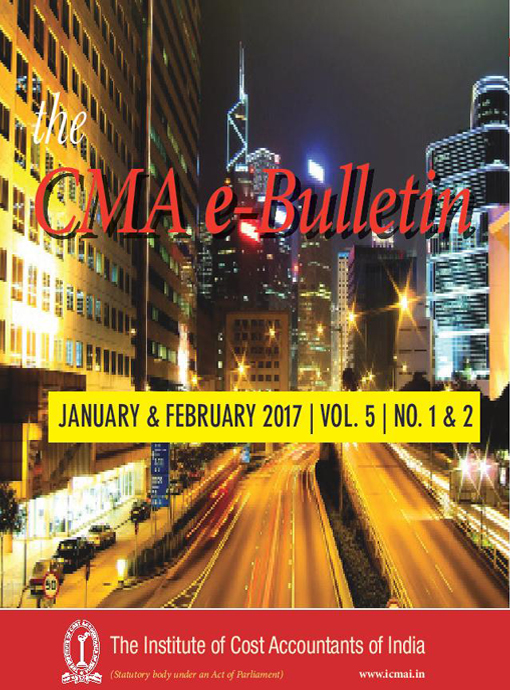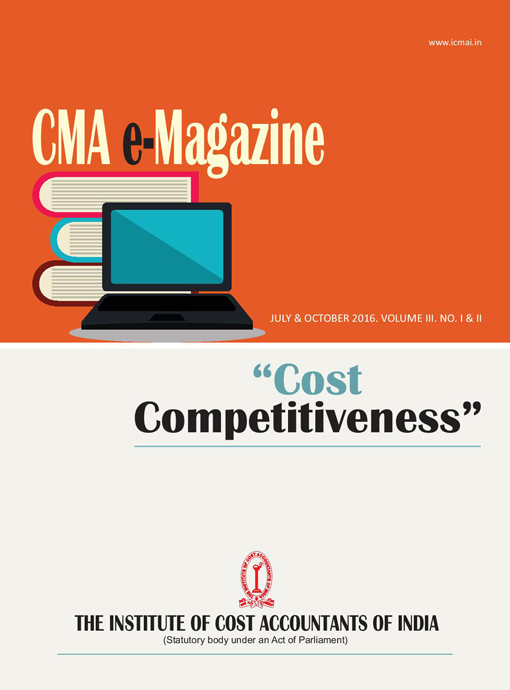E Library & Resources

E-library
E-library provides collaborative search of all type of e-resources/on-line resources such as e-journals, e-books, e-database purchase or open access available with collaboration, personalization and social features to experience higher research productivity and gain valuable insights. E-Library is a special library with a focused collection of digital objects that can include text, visual material, audio material, video material, stored as electronic media formats along with means for organizing, storing, and retrieving the files and media contained in the collection. These libraries can vary immensely in size and scope, and can be maintained by individuals, organizations, or affiliated with established physical library buildings or institutions, or with academic institutions. It's an electronic or online library where one can have access to books, journals, novels, articles, or any other information over net. E-Libraries also known as Digital libraries are large, organized collections of information objects. Well-designed digital library software has thepotential to enable non-specialist people to conceive, assemble, build, and disseminate new information collections. This has great social impact because it democratizes the dissemination of information. In particular, it will revolutionize the way in which education is conducted and educational materials are prepared.
Journal Database
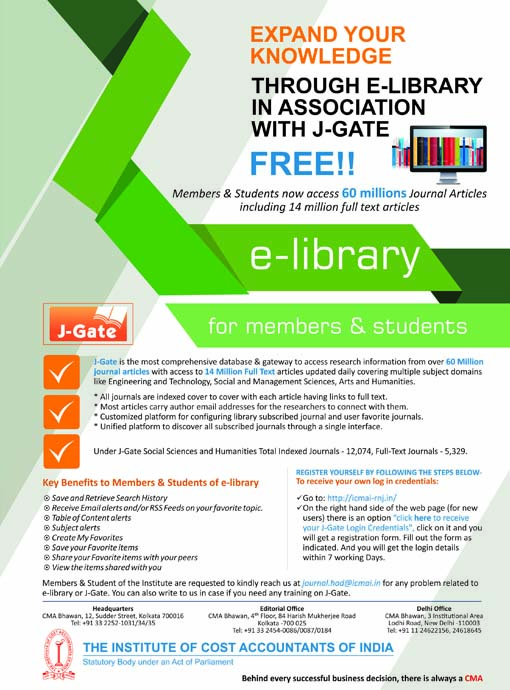
(Members of the Institute are requested to kindly reach us at [email protected] with their full Name, Membership Number and Date of Birth for J-Gate user ID and password)
J-Gate is the most comprehensive database and access gateway for the discovery of global e-journal literature. Today, it qualifies to be the world’s largest database of journal articles – indexing metadata of over 51 million journal articles from 47,000+ journals and 13,100+ publishers in multidisciplinary domains, updated daily.
J-Gate acts as an electronic gateway to global e-journal literature with a customization functionality to search your own subscribed journals through one single search box. The J-Gate platform is fronted by a simple, intuitive, and easy-to-use interface, and also gives users complete control over search filters.
Corporate Database

Capitaline database provides fundamental and market data on more than 35,000 Indian listed and unlisted companies, classified under more than 300 industries, along with powerful analytic tools. Extensive data and analysis on every company profile, directors, 6-year financials (P&L, balance sheet, cash flow, segment data, ratios, etc), quarterly results, share price data, directors' report, Company Background, Company Snapshot, Peer Comparison, etc.
The specialized expertise in data collection, standardisation and presentation built up since 1985 has earned Capitaline Plus the highest level of respect and confidence in the financial information Industry.
CMA E- Bulletin
E Magazine on Cost Competitiveness
Knowledge Study Series
Events are encouraged focusing on specific topics, outcomes, and lessons learned that are extensible beyond their immediate context and relevant to a variety of institutions and organizations. These events aim to bring together small groups for recurring meetings, focusing each time on some particular subject, in which everyone present is requested to actively participate. This is often accomplished through debates, or through a more formal presentation of research. The workshops are conducted where the participants share knowledge, discuss questions and problems, learn from each other’s work, and generate fresh insights about how to collaborate strategically and successfully around the mission-driven integration of pedagogy and technology. Also Interaction session are being conducted at the end of the programme enlightening everyone present over there.
-
 2016
2016-
Ease of Doing Business in Gurgaon

Millennium City-Gurgaon is a leading financial and industrial city of India. Its economic growth story started when the leading Indian automobile manufacturer Maruti Suzuki India Limited established a manufacturing plant in Gurgaon in the 1970s. Today, Gurgaon is center for more than 250 Fortune 500 companies. Over the past 25 years the city has undergone rapid development and construction. The Government of India has already embarked on an ambitious agenda to improve India’s Doing Business rank to 50 by 2017. To create the jobs to employ India’s rapidly growing youth base and the only means of doing so is to catalyze increased private investment in India. This report contains detailed analysis the inner industrial as well as infrastructural potential of Gurgaon. Finally, this report has provided deep insights into regulatory practices across cities that will help to investment and development of world class infrastructural facilities vis-à-vis highlighting ‘Gurgaon’ as the most promising destination for doing business.
Contemporary issues in Sustainability Accounting & Reporting

Internationally, there is an intensifying trend towards business providing economic, environment and social information into the public domain through Sustainability Reports. It has been globally recognized that sustainability reporting leads to enhanced business performance through communication of information with stakeholders like customers, suppliers, employees, financial institutions, regulators and communities on a company’s economic, environmental as well as social management and performance. Integrated Reporting is the reporting of both financial and non-financial information, including sustainability information, in an integrated way, as contrasted with the current prevailing practice of issuing separate financial and sustainability reports. Integrated reporting causes us to think beyond compliance and financial reporting to deeply examine all the ways in which we deliver sustainable value, and is a highly practical way of redefining how business is done. As an internal auditor, CMAs also play a crucial role in integrated reporting. The IR Framework requires that organizations address risk management and governance areas, here the CMAs can help to prepare an effective implementation of the IR Framework by meeting requirements in the Standards related to risk management and governance.
Contemporary issues in Environmental Accounting & Auditing

Environmental accounting is a recent phenomenon that may reflect the corporate governance mechanisms in line with the natural resources, sound environmental management and administration systems in any nation. Environmental accounting contributes towards betterment of environmental performance by organizations, while simultaneously improving operational and financial efficiency, thereby promoting sustainable development. In this context, the CMAs can carry out Green audit to ensure Compliance of Environmental Laws, effective assessment of Environment Cost, Environment Impact Assessment and Carbon Credit. This would also help organizations identify ways to reduce waste, save money, improve overall efficiency and minimize liability risks.
Heritage India: Unveiling the new phase of Indian Tourism

The concept of ‘tourism’, in contrast, is a form of modern consciousness. The word ‘heritage’ in its broader meaning is frequently associated with the word ‘inheritance’, that is, something transferred from one generation to another. When cultural and heritage tourism development is done right, it also helps to protect our nation’s natural and cultural treasures and improve the quality of life for residents and visitors alike. The tourism sector of the Indian economy contributes towards foreign exchange reserves, creates income and employment opportunities, particularly in remote and backward areas, strengthens national integrity and promotes international under-standing by intensifying socio-cultural exchanges among people from different regions and countries. The Government has also been making serious efforts to boost investments in tourism sector and sector’s total contribution to GDP is expected to increase USD275.2 billion in 2025.
Indian Railways: Transforming into an Engine of Growth

Indian Railways (IR) is a great national asset. A single transport network connects far flung areas of the country. Every rupee of investment in Railways has the capacity to increase economy-wide output by Rs.5. The impact that this increased investment in Railways will have on the economic growth of the country is unprecedented. After decades of dry spell for investment in railways, IR is targeting to step up the investments with a plan to spendRs.8.56 trn in five years (FY16-FY20), which is a jump of more than 3.5x over previous five years. There exists a significant global opportunity for railway equipment, rolling stock and services and its current market volume is around EUR 162 billion per year and is said to be growing at a rate of 3.4 per cent per annum. By 2020, IR looks forward to meeting the long felt desires of the common man. Transformation of IR would require its re-orientation with an entirely different level of effectiveness. The CMAs can play vital role to achieve PM’s vision in cost optimization and utilization of resources in railway sector and to be a cost leader.
-
-
 2015
2015-
Ease of Doing Business: Unfinished Agenda

India is emerging as a key player in the global business arena. Delhi is the most prosperous state with highest per capita income in India. The per capita income of Delhi is almost three times higher than the per capita income of India. As a growing consumer market, a low cost manufacturing location and a source of skilled manpower, no global company can afford to overlook India and exclude it from their growth aspirations. The World Bank, in its “Ease of Doing business 2015” report currently ranked 142nd among 189 nations. Delhi government fully understands the adumbration and motives of ‘Ease of Doing Business’ and thereby an empowered committee has been constituted. Delhi, being selected as a pilot State for the e-Biz Project and creation of an Investment Facilitation Cell to guide, assist and handhold investors during various phases of business cycle. The focus of the analysis is on benchmarking practices across developed economy, developing countries, and Indian states. Finally, recommendations for Delhi are developed based on this analysis.
Destination India - “Evolving Medical and Wellness Tourism Hub”
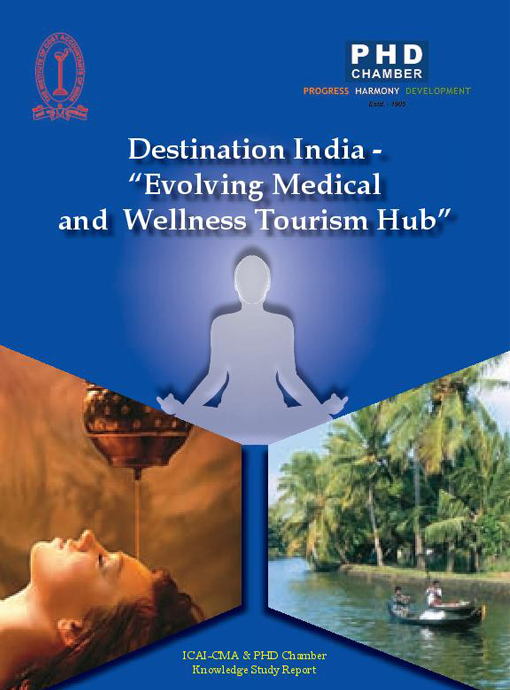
Medical tourism can be defined as the process of travelling outside the country of residence for the purpose of receiving medical care. Health Tourism, also known as Medical Tourism, is believed to become a major driver of economic growth in India, as first world patients, driven out of their own systems by high costs and crowded conditions, look for cheaper and better options for medical care. India has proved itself to be a major destination for health tourism, healthcare outsourcing and medical back office support. In general, Health/ Medical Tourism encompasses both Medical tourism and Wellness tourism. India's medical tourism sector is expected to experience an annual growth rate of 30%, making it a $2 billion industry by 2015. Though this area of Health and medical tourism has so far been relatively unexplored , the Ministry of Tourism, Government of India, various state tourism boards and even the private sectors consisting of travel agents, tour operators etc all are eying this sector as a segment with tremendous potential for future growth.
Swachh Bharat Abhiyan for Sustainable Growth
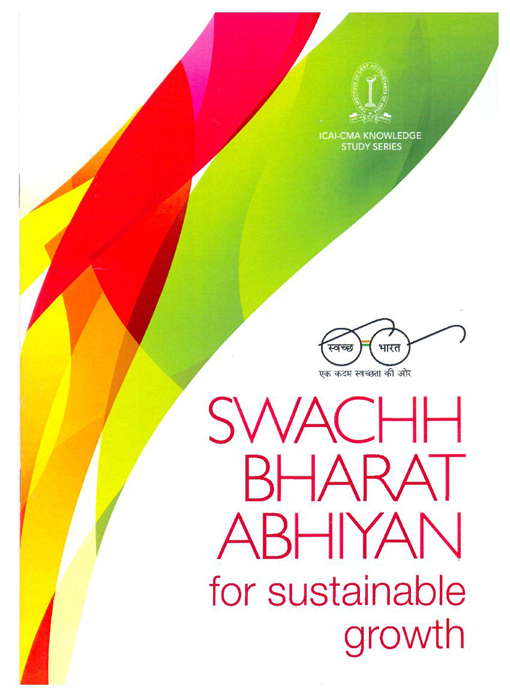
A clean India is the responsibility of all 1.25 billion Indians. Keeping the country clean and disposing of human waste are necessary for good health. There are many secrets in life to be prosperous, wealthy, healthy and happy. One of the core practices is to be self-disciplined and practice cleanliness. A clean and a healthy environment would definitely contribute to national development as it is very important for healthy living. It is in this context that our Prime Minister has called for a 'swachatha abhiyan' or cleanliness campaign. This campaign was launched on 2 October 2014, the birth anniversary of Mahatma Gandhi. Thus, the duty of every citizen of India is to deliver the faith imposed upon us by our Prime Minister.
Make In India and The Role of CMAs
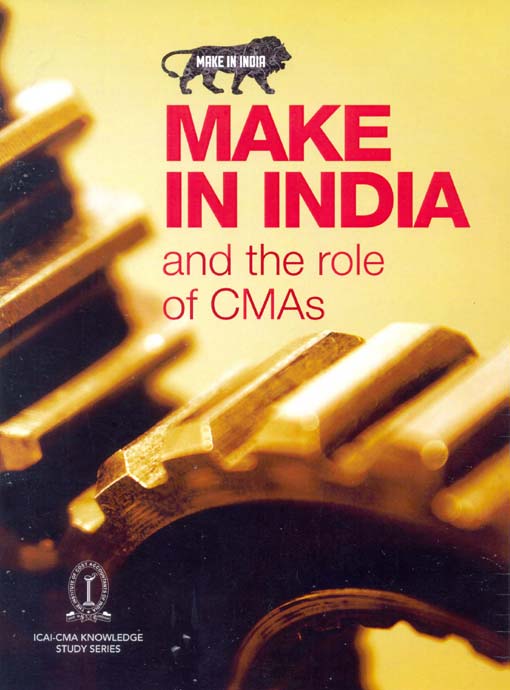
'Make in India' is an international marketing campaign slogan coined by the Hon'ble Prime Minister of India, Shri Narendra Modi on 25 September 2014 to attract business houses from around the world to invest and manufacture in India. The major objective behind this initiative is to focus upon heavy industries and public enterprises while generating employment, empowering the secondary and tertiary sectors and utilising the human resources present in India. The Indian economy is the world's tenth largest by nominal GDP and third-largest by purchasing power parity (PPP). The core strength of India lies in its ecoonomic policy which is a mixed balance between the two extremes of capitalism and communism. The value addition is the college-educated youth of India. The number of college-educated youth in India is fairly high and so is their employability. Let us usher in 'Make in India' and remember that the Cost Vantages that may be explored and experienced in 'Make in India' could be the starting point in our journey to the ultimate 'Indian Cost Leadership'!
Heritage Tourism-A Strategic Perspective
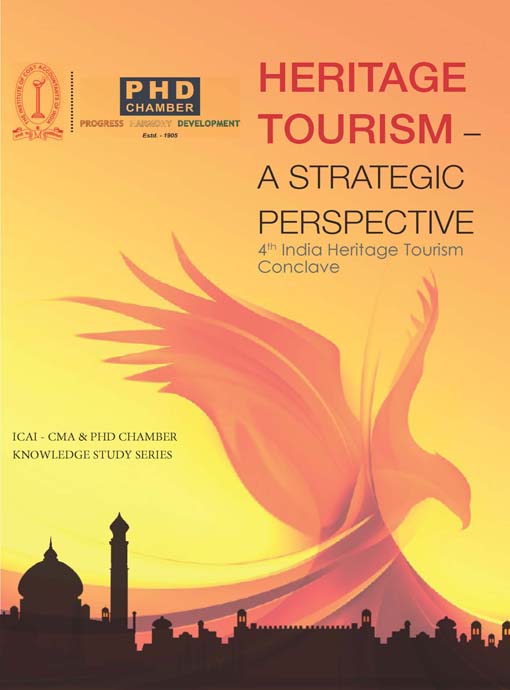
Tourism, on one hand, represent the inner quest of an individual to satiate the fundamental urge of knowing the unknown, seeing the unseen, doing that has not yet been done and sensing the new by getting-away from daily routine or undertaking a journey of one's interest or liking with availability of spare time and thus rejuvenate and recharge the body, mind and soul with freshness and happiness and doing activities which gives him/her satisfaction and thus utilise the available spare time in a quality manner. On the other hand, tourism also represent the travel or activities undertaken to help attain satisfaction which imparts education and enlightenment, spiritual or religious quest, peace and happiness of body, mind and soul.
Asian Summit on Health Care Cost Management
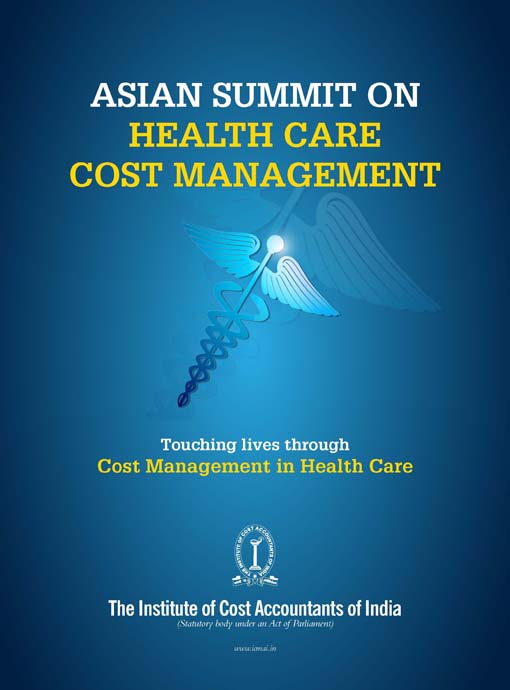
Healthcare is important to everyone. Healthcare insurers are continuously challenged to determine their organizational effectiveness. Despite modern processes and systems indirect costs are increasing. To reduce these costs many organizations are introducing shared service centers, centralizing certain operations either in the front or back-office. The economies of scale outweigh the overhead of such centralized operations, but the overhead and other types of indirect costs still need to be allocated. Profitability and cost management solutions help ensure the business relevance of shared service centers. Profitability and cost management solutions can also help establish whether these shared service centers should be placed within the organization or should be outsourced. In such an exercise, the burden of internal indirect costs can be compared and benchmarked against external services.
Indian Railways-On the First Track
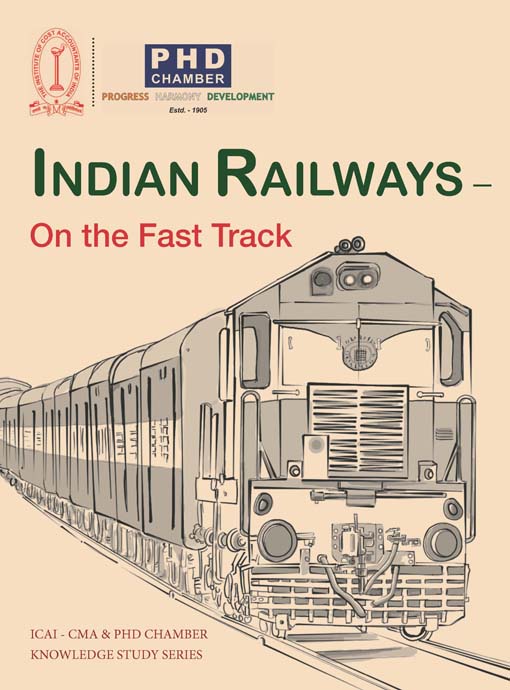
Indian Railways, today, is the key facilitator of Indian economy and also acts as an economic driver and catalyser. Indian Railways is steadily moving towards developing a strategy to become part of an effective multi-modal transport system, so as to ensure environment friendly and economically efficient transport movement. The key focus areas for IR include creation of capacity, modernization of network, improvement in asset utilization and productivity, modernization of rolling stock and maintenance practices, and improvement in the quality of services and overall hygiene and cleanliness. Investments are being prioritized in important areas like Dedicated Freight Corridors (DFCs), high speed rail, high capacity rolling stock, last mile rail linkages, and port connectivity. Indian Railways is heading its way into the future possibilities with full speed.
Odisha: The Land Of Opportunities
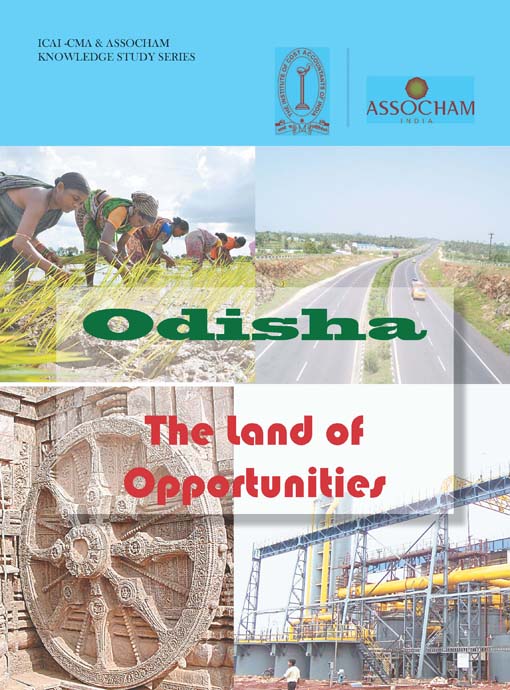
Odisha has emerged as the most preferred destination for overseas investors with investment proposals. The demand for power in Odisha has been rising at a faster rate due to increased emphasis on industrialization and expansion in household electrification. The state is endowed with vast natural and human resources which can be used for further industrial development. Mineral deposits like Iron Ore, Manganese Ore, Chromite, Bauxite, Graphite etc, and agricultural surplus like Rice, Pulses, Oil seeds, Vegetables, Spices offers vast scope for establishing new industries in Odisha.
Knowledge Study on - Food Crisis in India and Sustainable Agriculture
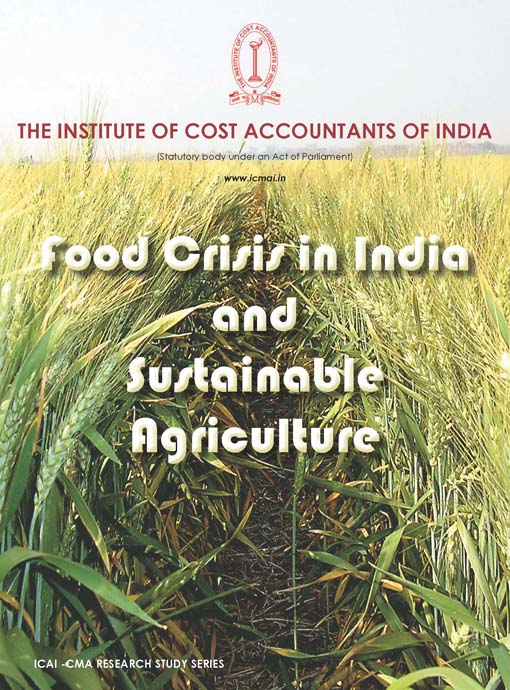
Indian agriculture has undergone a rapid transformation in the past two decades. The policy of globalisation and liberalization has opened up new avenues for agricultural modernization. India is today consistently producing 255 million tonnes (MT) of food grains, 104 MT of rice, 92 MT of wheat, 35 million bales of cotton, and more than 18 MT of pulses. The growth is facilitated mainly by Krishi Vigyan Kendras (KVK) system which is spread across the country. The country is also the largest producer, consumer and exporter of spices and spice products in the world and overall in farm and agriculture outputs, It is ranked second. From canned, dairy, processed, frozen food to fisheries, meat, poultry, and food grains, the Indian agro industry has plenty of areas to choose for business. Agriculture is a major source of livelihood for the people and in order to achieve development of Indian Economy, agricultural or rural development has to be accorded a top priority.
-
-
 2014
2014-
Exchanges for SMEs: Emerging Needs Vs Future Challenges

Though the Indian framework for SME exchanges appears to be balanced and sustainable with measures like simplified process, reduced reporting and compliance requirements, post listing handholding by merchant bankers, underwriting, market making, etc, more awareness and knowledge sharing would be helpful to SMEs to enjoy the benefits of SME capital markets.
Think India Think Tourism
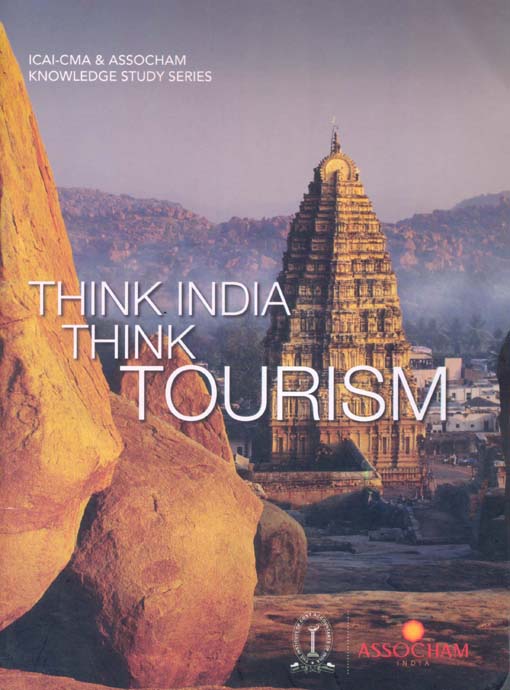
Bestowed with some of the finest natural treasures and world renowned tourist destinations, India has immense potential to emerge as the most sort-after tourism destination across the world. But the tourism sector in India has been confronted with a number of concerns which have prevented the tourism industry from operating at its optimum capacity. It would be necessary that all wings of the Central and State governments, private sector and voluntary organizations become active partners in the endeavour to attain sustainable growth in tourism if India is to become a world player in the tourism industry.
Madhya Pradesh: A Mice Tourism Destination
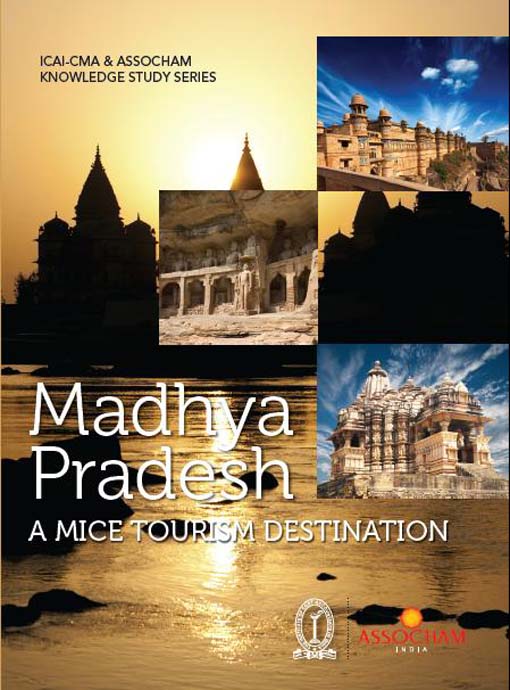
Called the Heart of India because of its location in the centre of the country,Madhya Pradesh is home to the cultural heritage of Hinduism, Islam, Buddhism, and Jainism. With its monuments, exquisite temples, stupas, forts and palaces, its delectable cuisine, modern facilities, personalised service and hospitality, Madhya Pradesh is fast emerging as the most preferred MICE (Meetings, Incentives, Conferences and Exhibitions) destination of India.
Enhancing Cost Competitiveness in MSME Sector In India & Role of CMAs

MSMEs Sector worldwide are being considered as the growth engine of any economy. It is also true for developed countries and more applicable for developing and underdeveloped countries where capital is scarce and labours are plenty. SMEs face more constraints and risks in comparison to large firms but also have the potential to improve the aggregate productivity of the economy. Properly aimed SME policies aims at increasing firm's productivity through the promotion of training, innovation, quality certification,and facilitation of SME financing.
International Meet on Buddhist Tourism
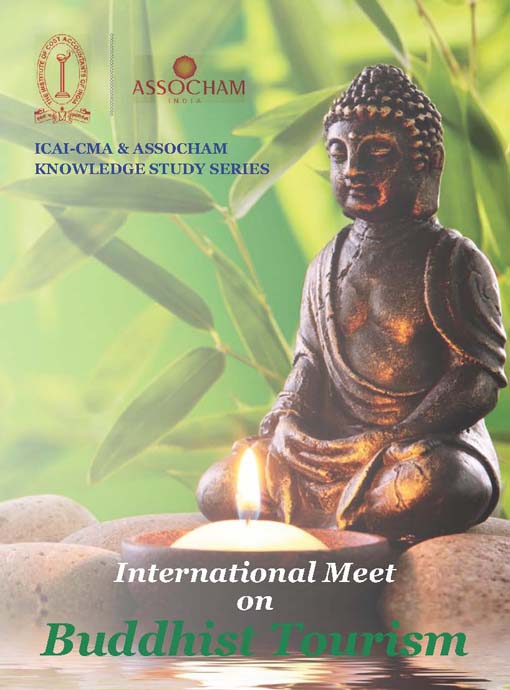
Buddhism, or the spiritual tradition of the awakened one, Buddha, (Buddha-dharma) is regarded as one of the three most widespread major world religions. The spread of Buddhism down the centuries was to leave in its wake a wealth of symbolic structures, including sculpted caves, stupas (relic shrines), chaityas (prayer halls) viharas (monasteries), mahaviharas (universities) and numerous art forms and religious literature. India is the land where Buddhism originated. In India, the International Finance Corporation (IFC), an arm of the World Bank worked with a government constituted multi stakeholder Buddhist Circuit Steering Committee to develop a five year roadmap to establish the Buddhist Circuit as a tourist and pilgrimage destination. Ministry of Tourism in India is making a lot of initiatives to develop the Buddhist Circuits and Buddhist Tourism has been considered as a MICE Destination.
Cost Effectiveness through Cost Audit
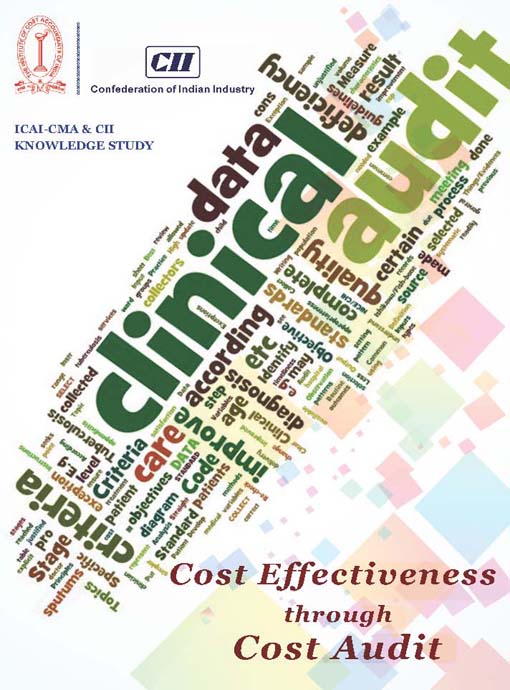
The main aim of cost effectiveness is to minimise cost and ensure optimum utilization of resources. Here the cost audit can play a huge role to fulfill the objective of cost effectiveness. The Cost Audit verifies the cost of manufacture or services, on the basis of accounts as regards utilization of material or labour or other items of costs, maintained by the company and it detects errors, frauds and misappropriations and hence enhance cost effectiveness.
Leveraging Jan Dhan Yojana
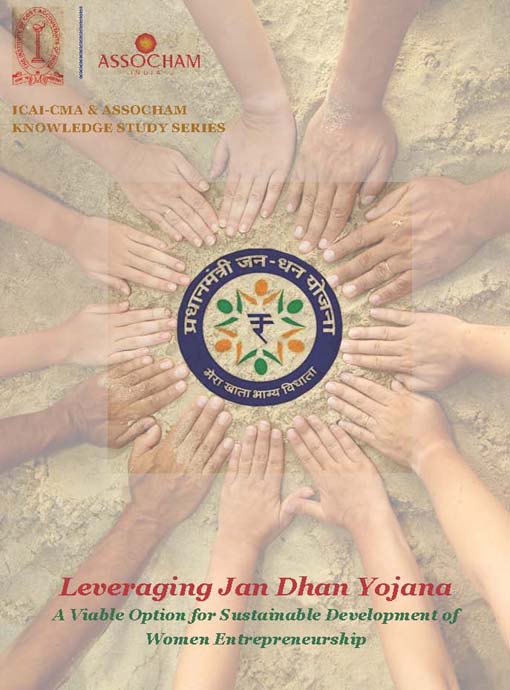
The Pradhan Mantri Jan-Dhan Yojana lies at the core of development philosophy of "Sab Ka Sath Sab Ka Vikas". The primary aim of the Jan Dhan Yojana is to bring poor financially excluded people into the banking system by providing them basic savings bank account and debit cards. The long term vision of the Jan Dhan Yojana is to lay the foundation of a cashless economy and is complementary to the Digital India Scheme. Financial Inclusion is equal to the sum of Awareness and Access and is the delivery of financial services at affordable costs to sections of disadvantaged and low-income segments of society. There are five levels of women's empowerment framework: welfare, access, conscientisation, mobilization and control. A women's best protection is a little money of her own. By giving a loan and overdraft facilities without collateral to clients, PMJDY wants to help low-income people especially women to escape from the clutches of money lenders.
-
-
 2013
2013-
Mumbai: Driving SESs to Growth
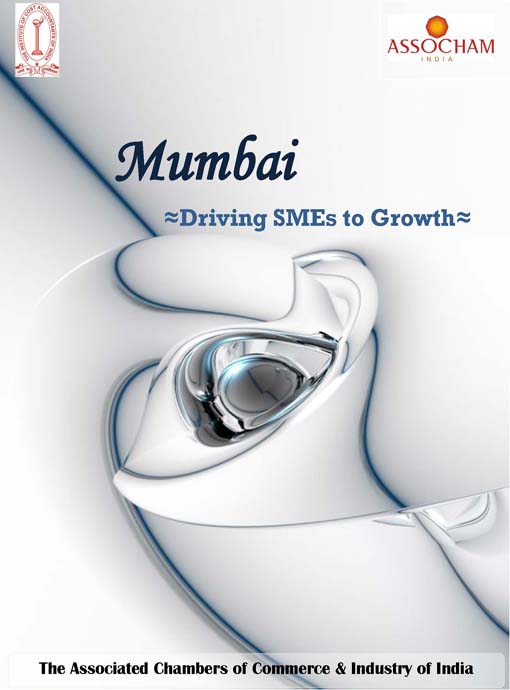
Maharashtra has been in the forefront of industrialization since its inception. Through a network of District Industries Centre (DICs), the state offers maximum guidance and assistance to SMEs. The MSME generates, enhance and sustain the demand for their products in order to maintain growth and stay competitive. The domestic MSME sector has outpaced industrial and GDP growth and MSMEs have outperformed Index of Industrial Production (IIP) and Gross Domestic Product (GDP) growth rates in the past five years.
Uttarakhand - Promoting SMEs for Sustainable Growth

Uttarakhand has unique environmental conditions for producing all types of silk, Mulberry silk in terai and plain areas and Tassar silk in hill areas. The Gross State Domestic Product (GSDP) of Uttarakhand was Rs. 609 billion in 2011-12 against Rs. 248 billion in 2004-05, registering a CAGR of 13.7%. SIDCUL, a government of Uttarakhand enterprise was incorporated as a limited company in the year 2002 to promote industrial development in the state and provides financial assistance to promote industries and develop industrial infrastructure in the state of Uttarakhand directly or through Special Purpose Vehicles, Joint Ventures, assisted companies etc.
Odisha: Promoting SMEs for Sustainable Growth
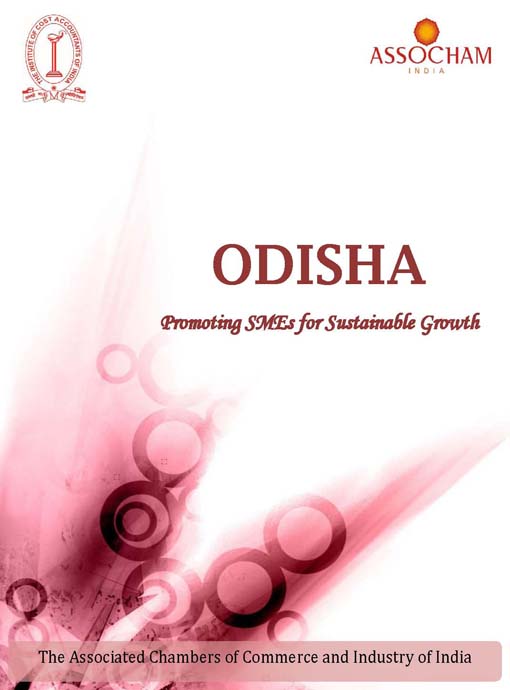
MSMEs are considered the best vehicles for promoting inclusive growth. They have an immense contribution to the employment and income generation as well as the MSME sector in Odisha is much bigger than the large industry segment in terms of investment. In terms of outstanding investments, Sundargarh, Ganjam, Khordha, Cuttack, Keonjhar and Jajpur are the top six districts, contributing to 50% of total MSME investments.
Madhya Pradesh- Defining New Era for SMEs

Agro-products, chemical and chemical products, consumer goods,drugs and pharmaceuticals, mines and minerals, manufacturing and textile sectors are some of the key sectors that are attracting major investments in Madhya Pradesh. The state is encouraging MSME segment through entrepreneurial drives, 'Escort Service' to entrepreneurs through Rajiv Gandhi Udyami Mitra Yojana, a Central Sector Scheme besides supporting venture funding through state agencies such as Madhya Pradesh Financial Corporation as well as national institutions such as SIDBI, IDBI etc.
Delhi- Kal, Aaj Aur Kaal
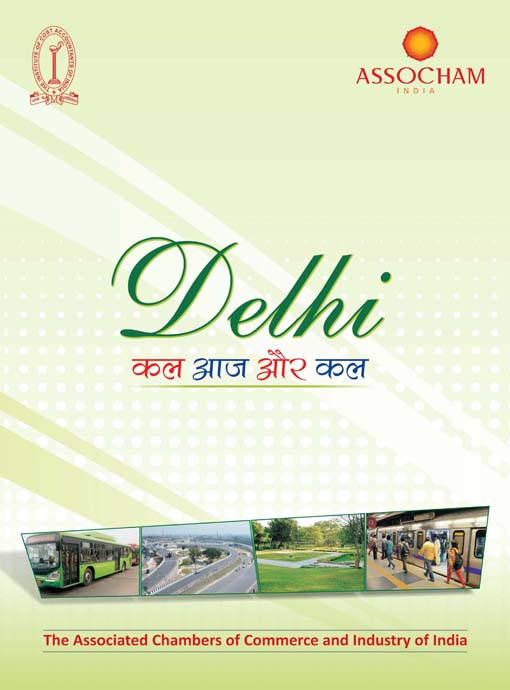
Delhi has alluring charm, unique diverse culture and history to be proud of. The geographical location, people, industry, modernity and hospitality make Delhi fascinating for any visitor. Important developments are taking place in every field. Delhi is getting outstanding fame and recognition internationally also. It has always been a hub of activity, art, culture, fashion etc and will continue to be so. The major share of income of NCT of Delhi is from the service sector which is treated as the growth engine for fast developing states in the Indian Union.
Positioning Bengal – II
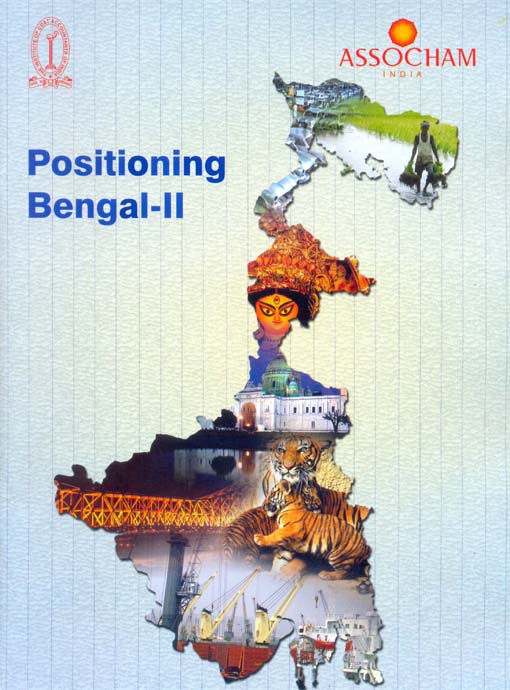
Due to the geographical location of the state, strategic points in West Bengal could be developed as hubs for cold storage, grading and sorting, processing for value additions and packaging for products been sent to North East, and neighbouring countries of Nepal, Bhutan, Bangladesh and Myanmar. Some of leading National and International firms have already set successful operations in the state. West Bengal is also promoting the MSME clusters in this sector and developing food parks for larger projects.
Doors to Shores - The Logistic Issues

The port of Kolkata is a riverine port in the city of Kolkata, India. KoPT has the potential to handle upto 1.65 million TEUs and keeping this in view, the Diamond Harbour container Terminal has been planned.The port has a vast hinterland comprising eastern India that includes West Bengal, Bihar, Jharkhand, UP, MP, Assam, North Eastern States and two landlocked countries, Nepal and Bhutan.
Odisha - The Tourism Destination

In February last year, Odisha was rated as the best emerging tourist destination in the country by the Travel+Leisure India and South Asia magazine. The award was based on the magazine's annual reader survey. Again in April of last year, Odisha Tourism bagged the Best Tourism Festival Destination Award at the award ceremony of the International Tourism Conclave and Travel Award (ITCTA). The State Government is not unaware of the state's tourism potential and is building on the reputation that the state is slowly getting. But what needs to be done is that SMEs must be spurred to involve themselves in building infrastructure and services. This Knowledge Report looks at the various ways in which SMEs can contribute to the growing tourism industry in Odisha.
SMEs - The Growth Drivers

More than 99% of enterprises in the European Union and 80% in the USA are MSMEs; India is not an exception. In India, its contribution towards balanced regional development, proper uses of local resources and talent is more than remarkable. MSMEs are the real growth drivers of the Indian economy but are beset by a host of problems, the most important among them being finance. The Knowledge Report looks at the SME sector in seven States and how CMAs could contribute to their development.
-
-
 2012
2012-
Inter State Trade-Transforming India into Single Market
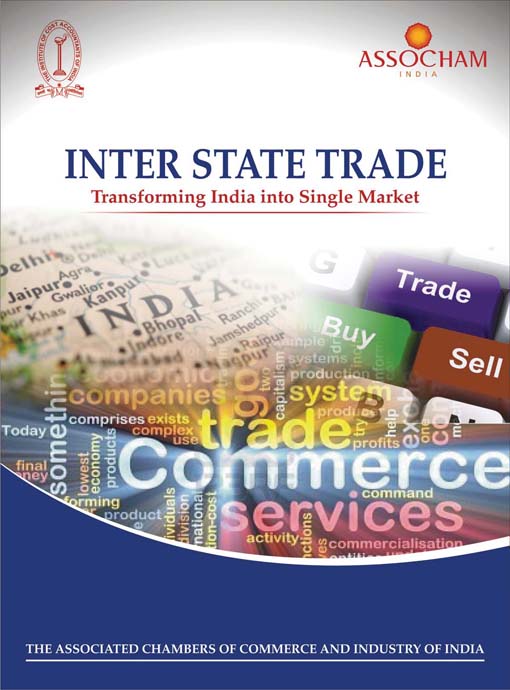
Inter State Trade occurs when there are no artificial barriers put in place by governments to restrict the flow of goods and services between trading nations. When Trade barriers, such as tariffs and subsidies are put in place, they protect domestic producers from international competition and redirect, rather than create trade flows. Inter State Trade enables to specialise in the production of those commodities in which they have a comparative advantage. The removal of inter-state barriers would facilitate the internal trade on one hand, while indirectly facilitating the foreign trade on the other.
Jammu & Kashmir: Empowering SMEs for Sustainable Growth
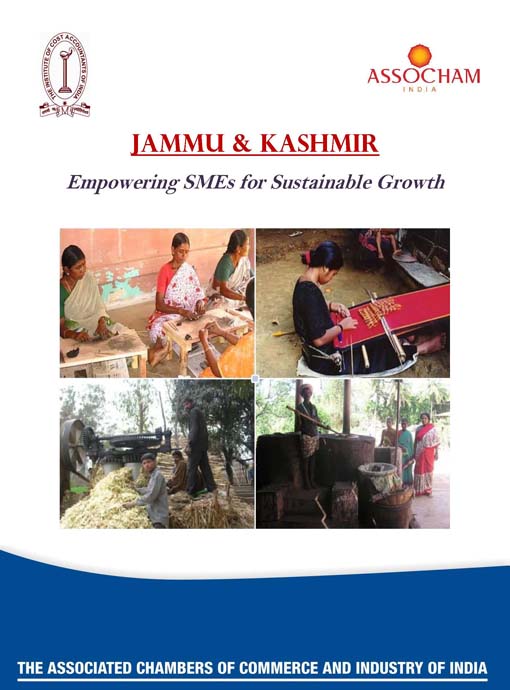
Contribution of MSMEs towards economic development is highly remarkable as compared to any other sectors of the economy. For developing small scale sector in Jammu and Kashmir, the government has set up District Industries Centres in each district wherein the MSME units are promoted. The MSME units are initially given the provisional registration and after commencement of production they are given formal registration.
Haryana: "Building SMEs for Sustainable Growth"
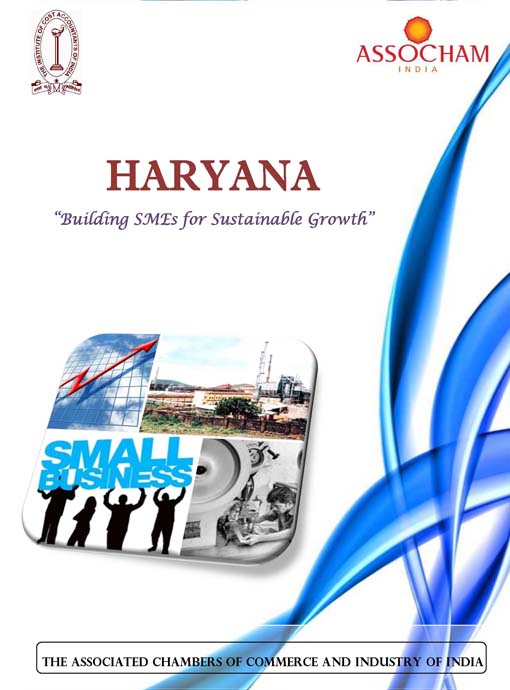
Having emerged as a preferred investment destination for the domestic as well as international investors, Haryana today is home to a number of multinational companies and corporate houses. MSME sector has got a bigger role to play in the environment of underdevelopment. The major observation in the growth and opportunity of the MSMEs in Haryana is regarding the marketing and the existence as well as survival of small scale entrepreneurs depends on sound marketing techniques.
-
